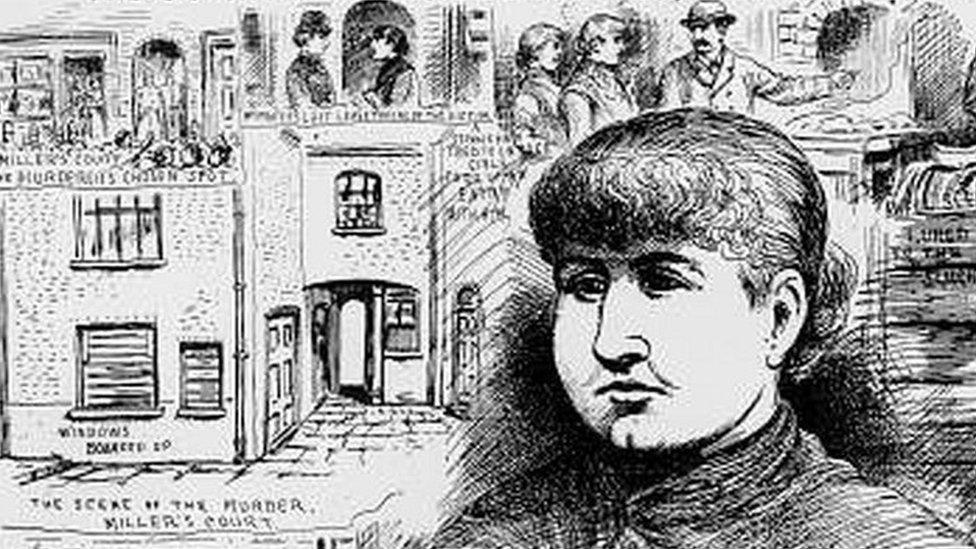Jack the Ripper letters suggest newspaper hoax
- Published
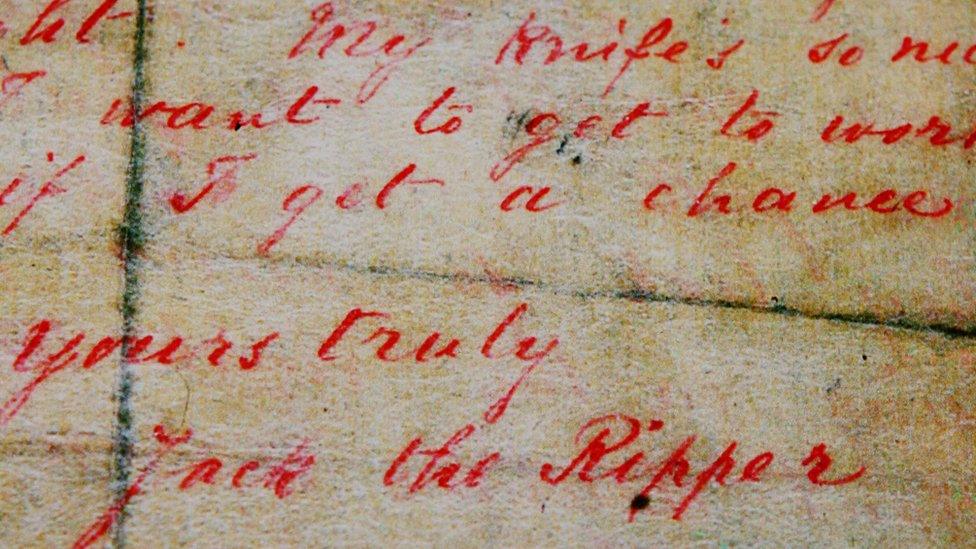
The "Dear Boss" letter, written in red ink, was signed Jack the Ripper - giving the killer his infamous nickname
Analysis of two famous letters ascribed to Jack the Ripper suggests they were faked by journalists to boost business.
It has long been suggested that two notes purported to have been penned by the notorious Whitechapel killer were hoaxes.
New linguistic analysis focused on the "Dear Boss" letter and "Saucy Jacky" postcard - both of which were received by the Central News Agency in 1888.
It found a number of similarities which pointed to a single author.
Forensic linguist Dr Andrea Nini searched for similarities between 209 letters sent to police or newspapers around the time of the murders, external.
'Skilful works of fiction'
His findings link the "Dear Boss" letter, received by the agency on 27 September, in which the name Jack the Ripper is used for the first time, and the "Saucy Jacky" postcard, which was received by the news agency four days later.
Similarities include the use of the saying "to keep back" instead of the more popular Victorian phrase of "to withhold" and the use of the word "work" as a euphemism for killing.
Both letters also include "ha ha" to depict laughter.
During his research, Dr Nini also found links with a third epistle - known as the Moab and Midian letter - forwarded to Scotland Yard by journalist Thomas Bulling.
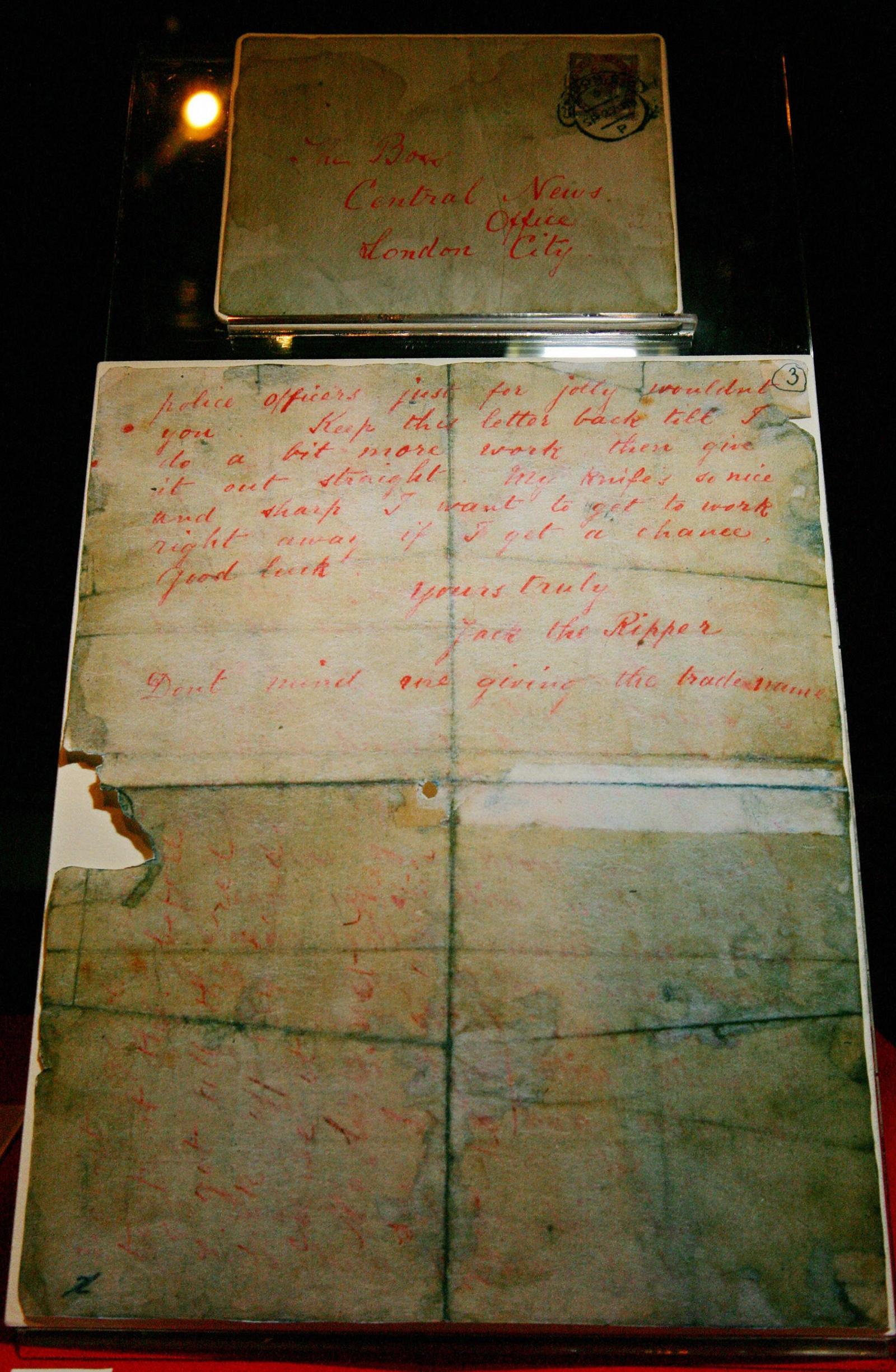
The '"Dear Boss" letter reads: "Grand work the last job was. I gave the lady no time to squeal. How can they catch me now"
The most common theory suggests the letters were "works of fiction skilfully created to generate shock and keep business alive", Dr Nini said.
According to historians, the Central News Agency faced "fierce competition" and had a reputation for embellishing news.
A transcript of Moab and Midian - announcing a triple murder and a promise to deliver "a bit of face"- was forwarded to police by Mr Bulling - leading experts to suspect him as the author.
"These results constitute new forensic evidence in the Jack the Ripper case after more than 100 years, even though they do not reveal information about the identity of the killer", Dr Nini said.
"People in the past had already expressed this tentative conclusion, on the basis of similarity of handwriting, but this had not been established with certainty."
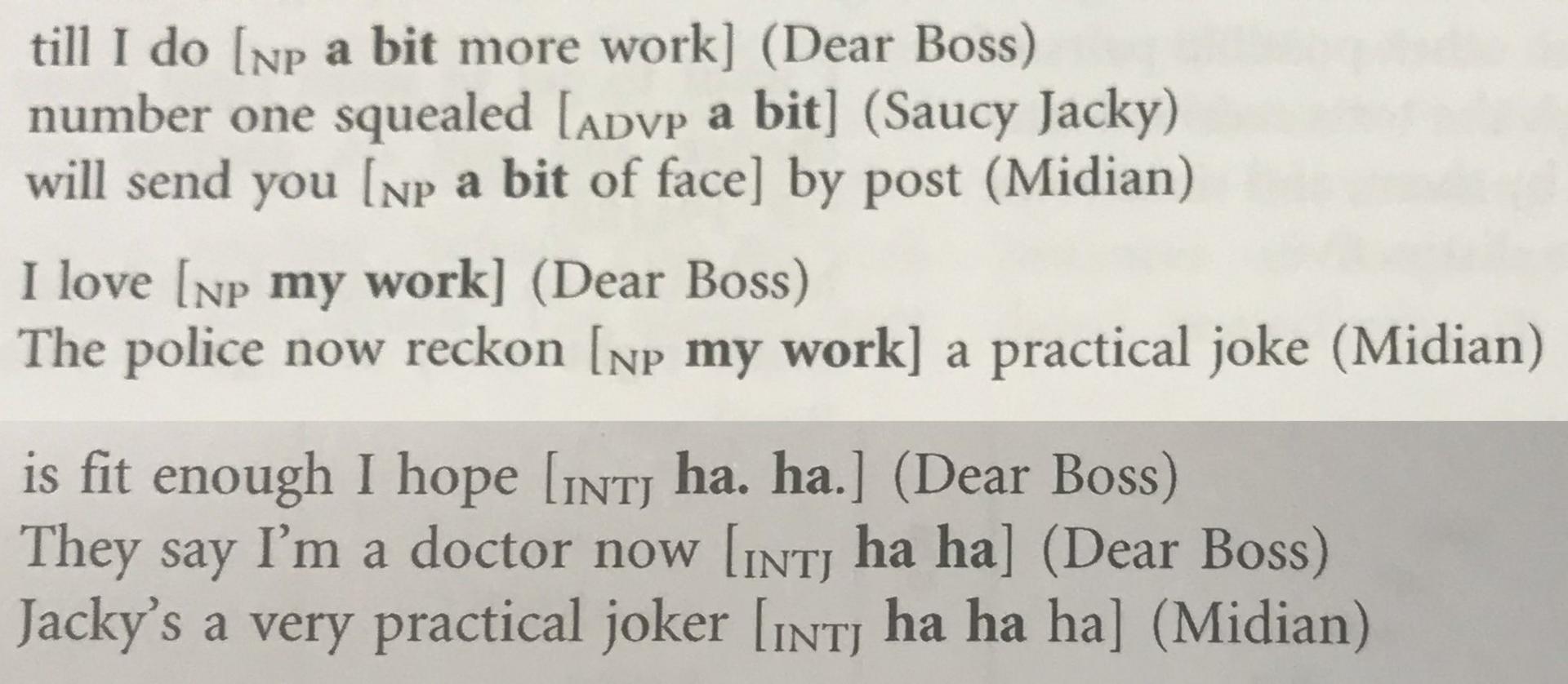
The letters use the word "work" as a euphemism for killing
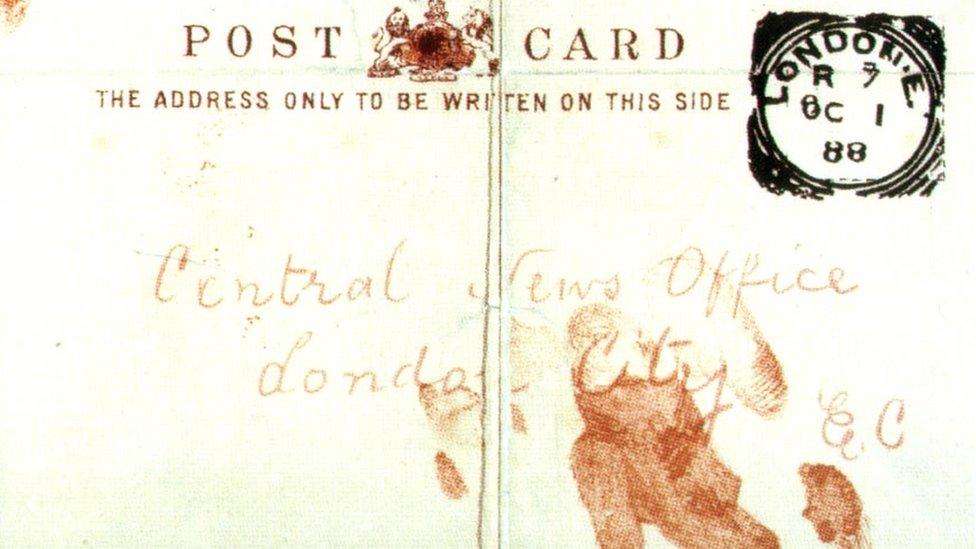
The postcard mentions that two victims were killed very close to one another: "Double event this time"
Jack the Ripper's murders remain the most notorious unsolved mystery in the history of British crime.
Between August and November 1888, he murdered five prostitutes in the Whitechapel area of east London.
Dozens of letters signed "Jack the Ripper" were sent at the time, but many were - and still are - regarded as hoaxes.
Speculation about his identity was rife at the time and remains so to this day.
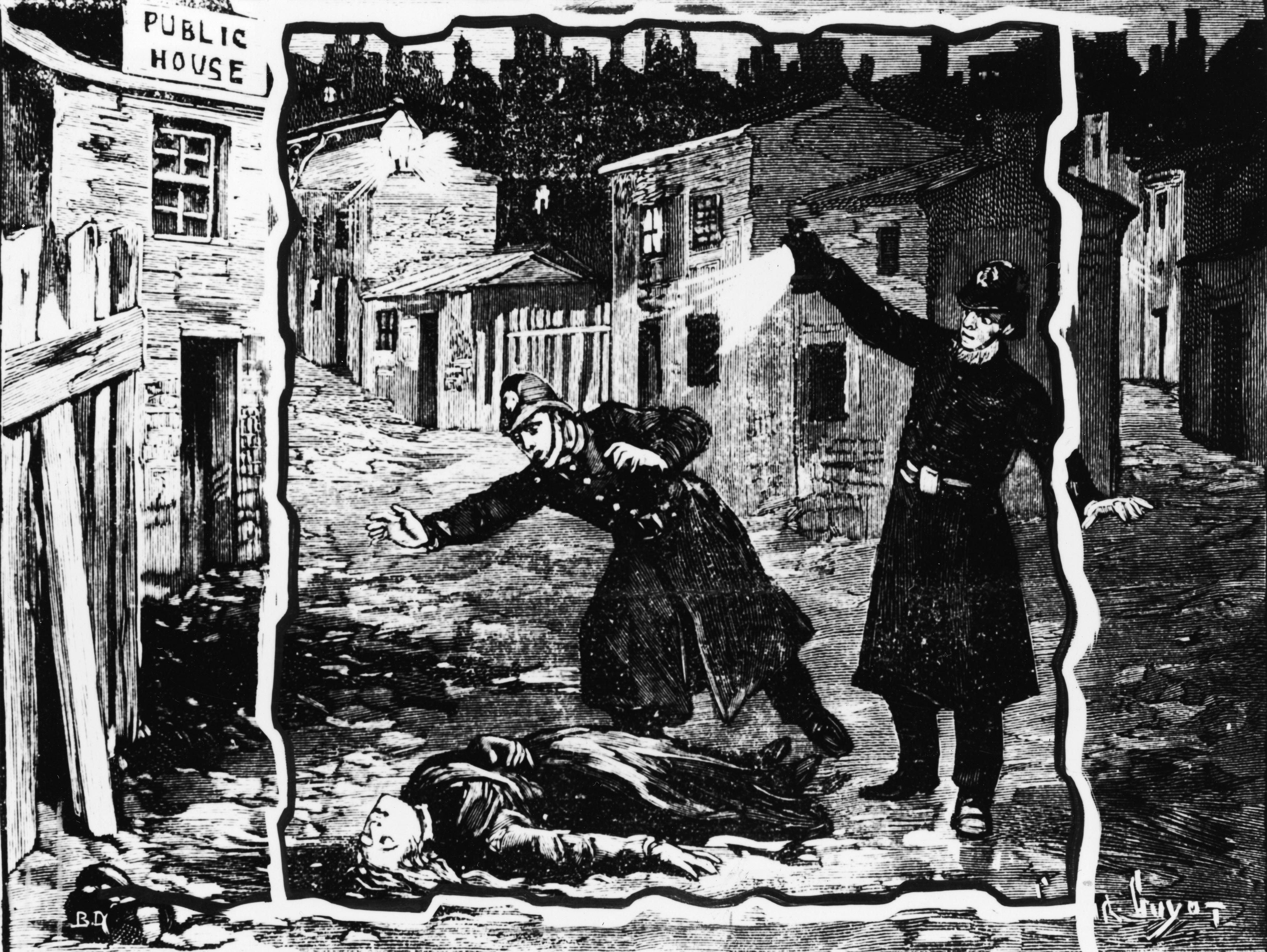
Attacks ascribed to Jack the Ripper typically involved female prostitutes who lived and worked in the slums of the East End of London whose throats were cut prior to abdominal mutilations
- Published23 August 2013
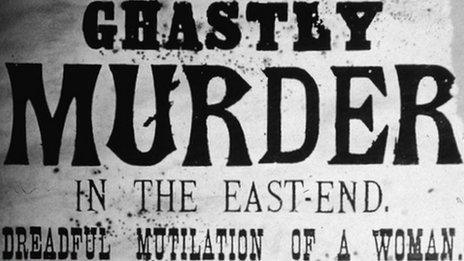
- Published14 March 2017
